#January 1976
Explore tagged Tumblr posts
Text
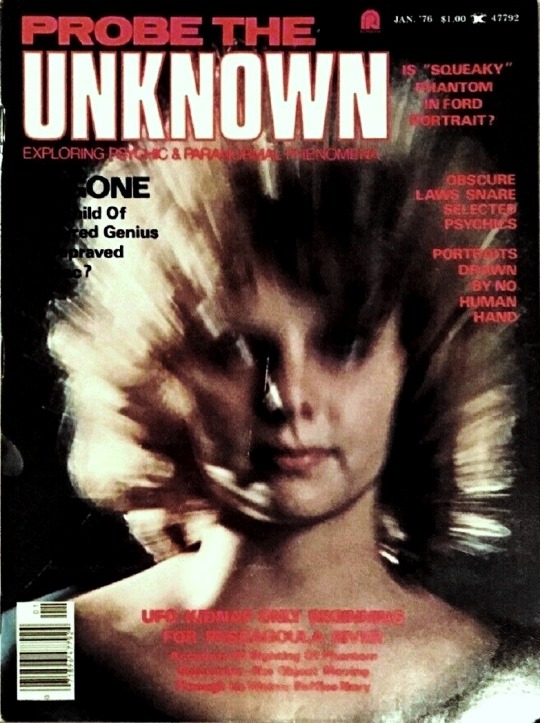
Probe The UNKNOWN - Rainbow Publications - January 1976
#witches#unknown#occult#viintage#probe the unknown#the unknown#rainbow publications#psychic#paranormal#psychic & paranormal phenomena#january 1976#1976#magazine
13 notes
·
View notes
Text

#70s#magazine art#famous monsters of filmland#January 1976#vampire#vampcore#fangs#vampire fangs#ingrid pitt#art#hammer horror
1 note
·
View note
Text
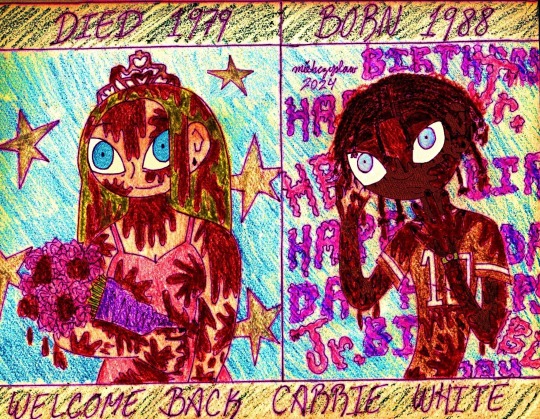
AND THE LORD VISITED EVE WITH A CURSE AND THE CURSE WAS THE CURSE OF B L O O D.
#carrie white#neil josten#carrie 1976#aftg#all for the game#fanart#marcydraws.jpg#blood cw#once more im catering no one but mE with niche crossovers#this was supposed to be for nathaniels bday on january 19th lmao pretend i time traveled or smth and i didnt post it super late#also first drawing of this year!!!!!!!!#it wasnt my intention to take such a long break from drawing but i was busy writing a fanfic exchange so 😮💨#hopefully now i can draw at least one doodle per month as usual :3
47 notes
·
View notes
Text

#peanuts#peanuts comic#sally brown#school#tw suicide#suicide mention#January 15 1976#peanuts out of context#my stuff
11 notes
·
View notes
Text




happy 49th birthday
emma bunton
#happy birthday#happy birthday 2025#january 21st#january 2025#emma bunton#1976 births#spice girls#singer songwriter#girl power#great british bake off#the spice girls
7 notes
·
View notes
Text
Song of the day:
Year of the cat - Al Stewart
Al Stewart released “Year of the Cat” on January 1, 1976. It was written by Peter Wood & Al Stewart.
The song includes about 60% instrumentals in the whole track!
Vietnam is the only country that celebrates the Year of the Cat; most other Asian countries replace it with the Year of the Rabbit. The actual "Year of the Cat" is known as a peaceful and harmonious one – “symbolizes sensitivity, gentleness and kindness.”
In the middle is a instrumental bridge including synthesizer, acoustic guitar, electric guitar and Saxophone!
#al stewart#spotify#music#song of the day#70's music#70's#music rec#music recs#song recs#year#of#the#cat#year of the cat#al stewart year of the cat#January 1#1976.#Year of the cat - Al Stewart#Spotify
3 notes
·
View notes
Text

Happy Blessed Birthday Durrell Artaze Babbs, better known by his stage name Tank; Born January 1, 1976.
@therealtank @rnbmoneypodcast
#Happy Blessed Birthday Durrell Artaze Babbs#better known by his stage name Tank; Born January 1#1976.#@therealtank @rnbmoneypodcast
4 notes
·
View notes
Text

3 notes
·
View notes
Text

The Ohio Sky Watcher, Ohio UFO Investigators League Inc (OUFOIL), Jan. Feb. Mar. 1976
#witches#buckeyes#occult#vintage#the ohio sky watcher#ohio#ufo#ohio ufo investigators league#oufoil#saucers#sky#sky watchers#january february march 1976#1976
37 notes
·
View notes
Text
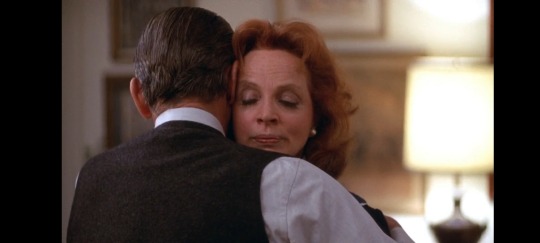
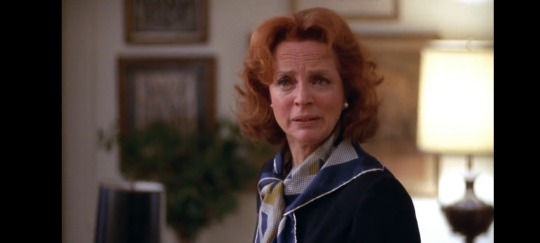
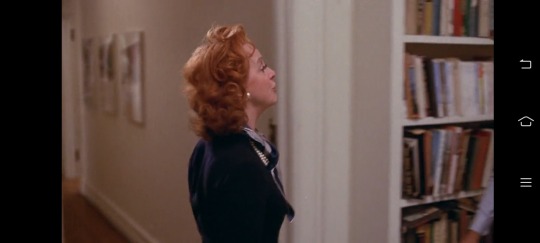
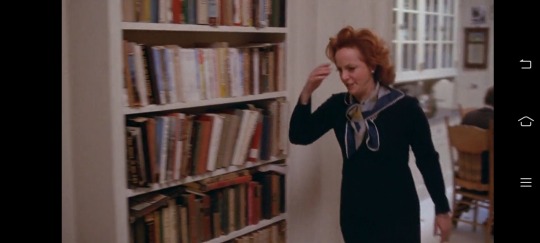
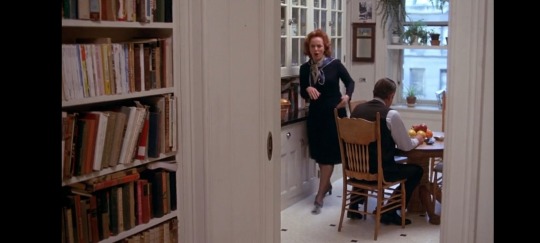

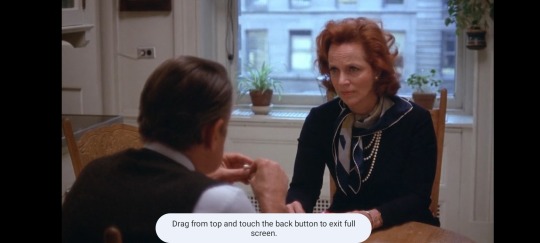
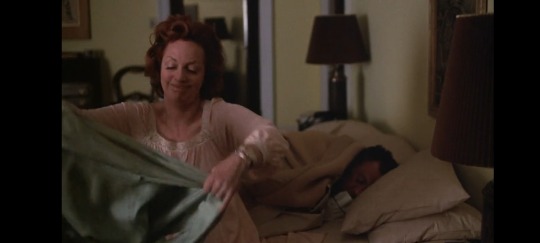
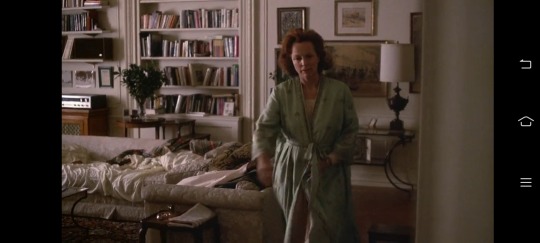
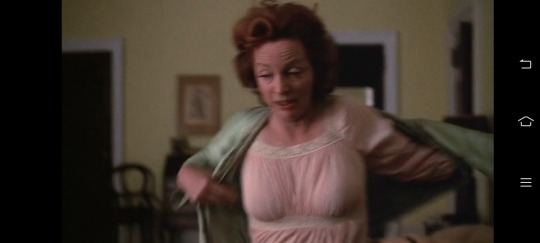
"Network" - 1976 film
I watched this a week or two or ago and was captivated by Beatrice Straight. I love a red head and the way that they dressed her in just the few scenes she had was immaculate. Just now I thought how strange that I don't have any images of the films lead, Faye Dunaway, because she is the reason I even looked the movie up. She was great and gave uncanny valley vibes the entirety of the movie, this could have easily been marketed as a thriller with a few changes to lighting and music. But as soon as I thought about Faye's character in comparison to her lover's wife (Beatrice Straight) it sort of makes sense... he (William Holden's character) leaves the life he worked years for with his long-term, beautiful and vibrant partner and well appointed home for a relationship with someone that seems new and exciting but turns out to be shallow, morally bankrupt and inhumane. Was this meant to be a metaphor about our (impeding) addiction to tv/media circus and technology? I think so, but what do I know.
(JANUARY 2024) MEDIA DIARIES
#network#network film#1976 film#faye dun#beatrice straight#movie review#movie thoughts#looks#january 2024
2 notes
·
View notes
Text

2 notes
·
View notes
Text
now that it’s valentines day here’s a reminder that mine and daigo got to share one last valentine’s (and maybe also white) day together before mine game ends himself
#snap chats#cant draw so <3#i say Debatably white day too since there's no day given only that y3 concludes in march of 2009#and white day's march 14th so#another FF because we know when yakuza 3 takes place we can vaguely figure out mine and daigo's birth months#well not Figure Out but we have a fair time table#we already know daigo was born in 1976 since he's 12 by 1988 in Y0#and by 2009 mine states that daigo's only older than him by a bit and going off of wht we know daigo's 33 by Y3#aka his birthday's already passed so he was born either sometime in-between january or early march#though maybe late february is a better option since mine's birthday has to pass too since he's ALSO 33 by y3#their birthdays are Probably close to each other's aint that cute <3 they.#they got to celebrate each other's birthdays one more time i have to stop reminding myself of this fact#anyways happy valentines day mine sucked i guess but tomorrow'll be better
17 notes
·
View notes
Text

Fashion Village
2 notes
·
View notes
Photo
#BANGERS!!! BANGERS ALL (via @rassilon-imprimatur)



Doctor Who episodes that aired on the 17th of January…
In 1970, Spearhead from Space Episode 3
In 1976, The Brain of Morbius Part Three
In 1981, Warriors’ Gate Part Three
61 notes
·
View notes
Text
regulus black got asked to be james' boyfriend on january 4th, 1976, his fifth year and the day the sun was closest to earth. he thought it was always meant to be like that.
and he died on july 5th, 1979. the day the sun was farthest from earth. with his last breath, he realised it was also always meant to be like that.
#jegulus#starchaser#sunseeker#marauders#harry potter#regulus x james#james x regulus#regulus black#james potter
5K notes
·
View notes
Text
Copy Right and Public Domain in 2025!
It's January 1st 2025 which means it's my favorite unsung holiday! Public Domain Day! This is the day once a year when, in the US, copyrights expire and things enter the public domain, meaning they belong to everyone! even you, Steve!
American copyright for books, movies, art work, and musical compositions (but not recordings, more on that later) runs for 95 years (way too long!) so today works published in 1929 join us in the public domain.
So whats free? so glad you asked.
Popeye the Sailor Man

Many people assume Popeye originated as a cartoon character but thats not true, he comes from a comic strip. The strip was called Thimble Theatre and Popeye was something of a late addition. Thimble Theatre was first published in 1919, so Popeye's girlfriend Olive Oyl has been in the public domain since before the big 20 year copyright freeze of 1998-2019. Popeye first appeared as a minor character 10 years into the strip's run but was so popular he soon took over and the strip would be renamed Popeye less than 5 years later. Now as always whats public is only what appears in 1929, later developments, remain copyrighted. Such as, while Popeye always had super strength its not till 1932 his superpowers were tied to eating spinach, and Olive Oyl originally had a different boyfriend named Ham Gravy, who she dumped for Popeye when he became the main character. It looks like Popeye is following tradition for famous now public domain characters and getting a quicky horror movie this year.
Tintin!

This is personally very exciting as someone who grew up with the Belgian boy detective. Like Popeye I expect a lot of people don't know that Tintin started off as a weekly comic strip. Indeed Tintin appeared as a part of a weekly youth supplement in the Catholic newspaper The Twentieth Century. Any ways, Tintin was first published in there in January 1929, and soon would start what would become the first Tintin story, Tintin in the Land of the Soviets. Now only part of Tintin in the Land of the Soviets was published in 1929, the story line wrapped up in May 1930, so only those 1929 stories and what appears in them is free and clear and Tintin was published in black and white not color. Tintin's author Hergé had no idea what he was doing and was really learning on the job so In The Land of the Soviets is generally seen as his weakest outing and the only one he never opted to redraw in later years. Even so it's nice to see the character free in the world. No word on if Tintin will star in a horror movie.
Buck Rogers (but not really)
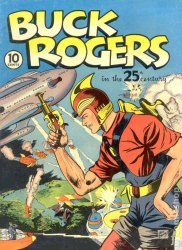
The original futuristic space man was published, again a comic strip, in 1929 which means he should enter the public domain today, but he won't. That's because he already is public domain! Before the Copyright Act of 1976 copyright was 28 years with the option to renew for another 28 years. The copyright on the original comic strips was not renewed so ran out at the end of 28 years, 1958. So Buck Rogers has been free and clear for close to 70 years now, whatever you hear about him today.
What else?
Famously last year Mickey Mouse entered the public domain, but all the entered public domain was one (maybe two) animated short, Steamboat Willie. Well this year a dozen Mickey Mouse animated shorts enter the public domain, including the first time Mickey has his iconic white gloves, and the first time Mickey speaks (the first thing Mickey Mouse ever says, voiced by Walt Disney himself, is "Hot dogs! Hot dogs!" in case you were wondering) This will give creators much more to work with if they want to use Mickey in their works which is exciting.
Speaking of Walt Disney, The Skeleton Dance is entering public domain, you likely don't know the title but I suspect you've seen at least part of it at some point

so look for this showing up on TVs in the backgrounds of films and TV shows in the next year or so
Books
The iconic novels of World War I, Ernest Hemingway's A Farewell to Arms and Erich Maria Remarque's All Quiet on the Western Front enter public domain. In fact All Quiet on the Western Front entered public domain last year, but only in the original German, the 1929 translation by Arthur Wesley Wheen is whats entered the public domain now. John Steinbeck's first novel, Cup of Gold, William Faulkner's The Sound and the Fury, Virginia Woolf's A Room of One's Own, and Agatha Christie's Seven Dials Mystery (always get an Agatha Christie novel on this list for the rest of our lives). Dashiell Hammett published both Red Harvest and The Maltese Falcon, later made into one of the greatest films of all time, in 1929. Future children's book author E. B. White (who's go on to write Charlotte's Web and Stuart Little) and future New Yorker cartoonist and humorist James Thurber teamed up to write the delightfully titled Is Sex Necessary? Or, Why You Feel the Way You Do a book of spoof essays making fun of popular books on Freudian sexual theories at the time. The Roman Hat Mystery the first of the long running Ellery Queen mysteries was published, Queen would keep publishing mysteries into the 1970s (and Ellery Queen was a pen name for two people). Richard Hughes' A High Wind in Jamaica and Oliver La Farge's Laughing Boy also came out in 1929 and are in the public domain now. There's much else but those are the highlights sorry if I missed your favorite 1929 novel.
Movies
Alfred Hitchcock and Cecil B. DeMille's first movies with sound, Blackmail and Dynamite respectively, came out in 1929. Marx Brothers' first feature film The Cocoanuts joins the public domain. Other comedy land marks are Harold Lloyd's first sound film, Welcome Danger and Buster Keaton's last silent film, Spite Marriage (which Keaton also directed). John Ford's first sound film, The Black Watch, which also is 21 year old John Wayne's first appearance in a film, as an uncredited extra, he worked in the art department. Hallelujah the first studio film to have an all black cast came out that year. Also worth noting is The Hollywood Revue of 1929 a singing and dancing review, one of the earliest and the movie that popularized the song Singin’ in the Rain, maybe the first time a movie made a song a hit.
Musical compositions
musical compositions, ie the lyrics and musical notations you might see on sheet music are governed by the 1976 Copyright Act, and music written in 1929 is public domain. Music recordings are governed by a whole different law (we'll get there). Songs written in 1929 include Singin’ in the Rain by Arthur Freed & Nacio Herb Brown, Ain’t Misbehavin’ and Black and Blue by the legendary Fats Waller, What Is This Thing Called Love? by Cole Porter, Tiptoe Through the Tulips by Alfred Dubin, You Were Meant for Me by Arthur Freed & Nacio Herb Brown, and also Happy Days Are Here Again by Jack Yellen which would become FDR's campaign theme song in 1932.
Art!
a number of pieces by Salvador Dalí including:
Illumined Pleasures
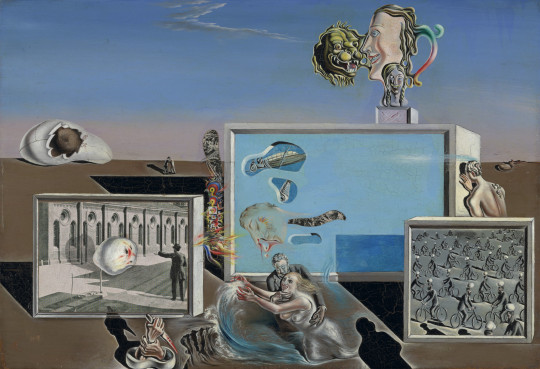
The Accommodations of Desire
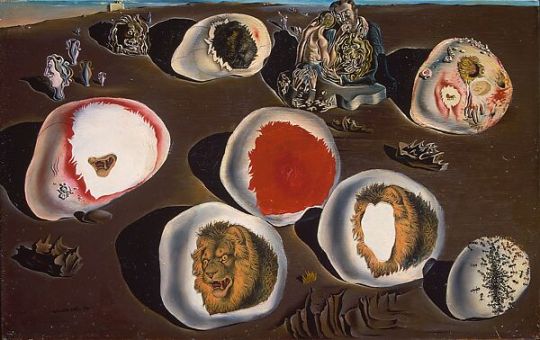
The Great Masturbator
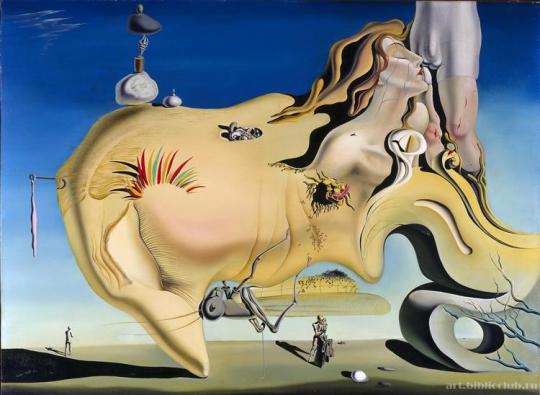
are entering the public domain as is René Magritte’s The Treachery of Images.
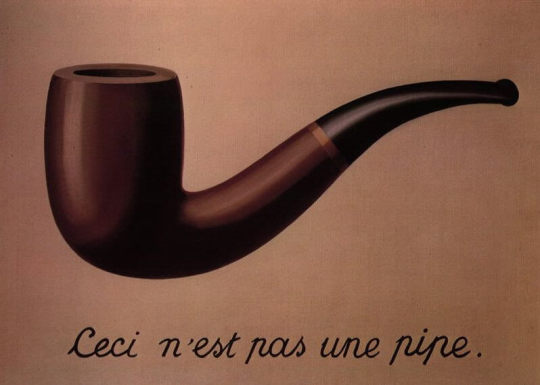
Art is hard because while movies and books are clearly "published" and put on sale, what counts as "published" for a piece of art? the law is not totally sure.
Musical Recordings
as I promised, we got here. Till 2017 there were no federal laws governing the copyright of music recordings before the 1970s, it was governed by a confusing patchwork of state laws and it was not totally clear what was or was not free and clear even from the very earliest recordings ever. Now the term of a music recording's copyright is set at 100 years (way too long) so music recorded in 1924 is now public domain such as. Nobody Knows the Trouble I’ve Seen by Marian Anderson, Everybody Loves My Baby (But My Baby Don’t Love Nobody But Me) by Louis Armstrong, California Here I Come by Al Jolson, Rhapsody in Blue by George Gershwin, Shreveport Stomp by Jelly Roll Morton, Mama’s Gone, Good Bye by Ray Miller, and It Had To Be You by Marion Harris. Now many recordings a lot less famous can finally be preserved and digitized to save them for the next 100 years. Many abandoned works are literally rotting away since without the copyright holder's permission digitizing a work isn't legal.
#Copyright#public domain#public domain day#Popeye#Tintin#the adventures of tintin#Mickey Mouse#Disney#buster keaton#the marx brothers#louis armstrong#cole porter#singin' in the rain#alfred hitchcock#salvador dali#Agatha Christie#Ernest Hemingway#virginia woolf#John Steinbeck#William Faulkner
3K notes
·
View notes